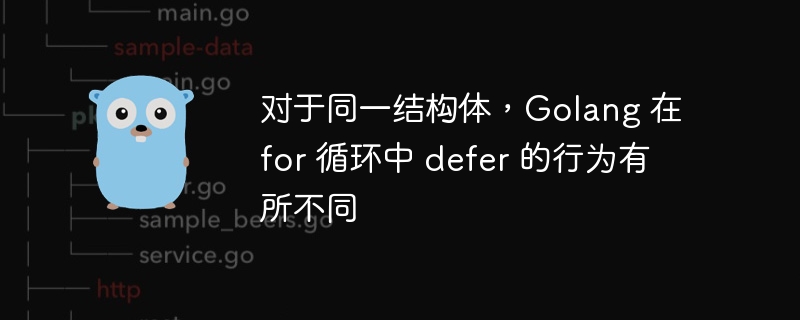
我编写了以下 golang 代码并运行了它。
type test struct {
name string
}
func (t test) hello() {
fmt.printf("hello, %sn", t.name)
}
func (t *test) hello2() {
fmt.printf("pointer: %sn", t.name)
}
func runt(t test) {
t.hello()
}
func main() {
mapt := []test{
{name: "a"},
{name: "b"},
{name: "c"},
}
for _, t := range mapt {
defer t.hello()
defer t.hello2()
}
}
输出:
pointer: C
Hello, C
pointer: C
Hello, B
pointer: C
Hello, A我的理解是,指针 t 在 3 个循环后将指向“c”,因此三个 3“c”用于“hello2”输出。然而,延迟“hello”函数调用的行为非常奇怪。看起来它正在保留它所指向的位置。 (t test) 如何影响这个?
我很好奇golang将其编译成什么。非常感谢!
正确答案
在 for 循环内,defer 语句的参数是一个闭包。闭包捕获循环变量 t。
对于使用值接收器的调用,闭包包含 t 的副本。对于使用指针接收器的调用,闭包包含一个指向 t 的指针。
循环变量在每次迭代时都会被重写(此行为将在该语言的更高版本中更改)。因此,值接收器闭包捕获每个值,而指针接收器闭包仅捕获指针,因此,在运行时,它们使用该指针的最新值。



